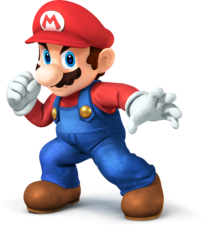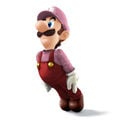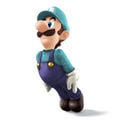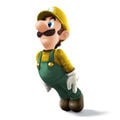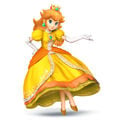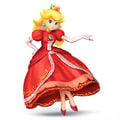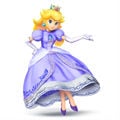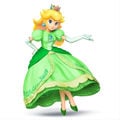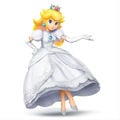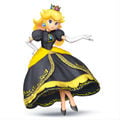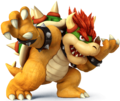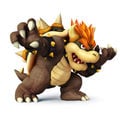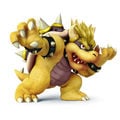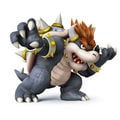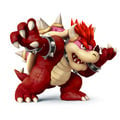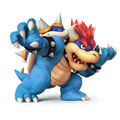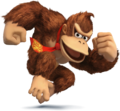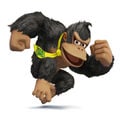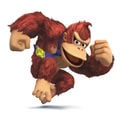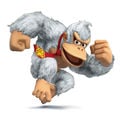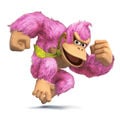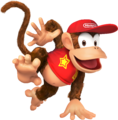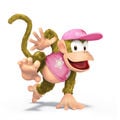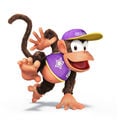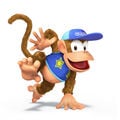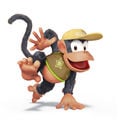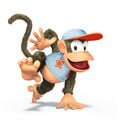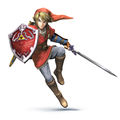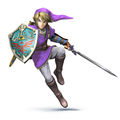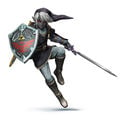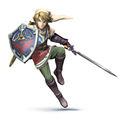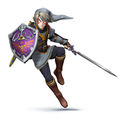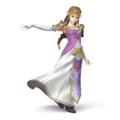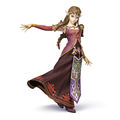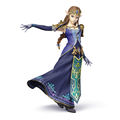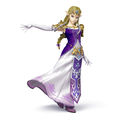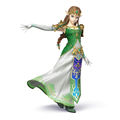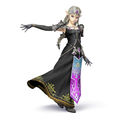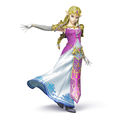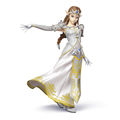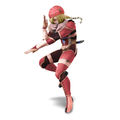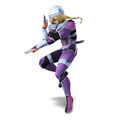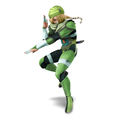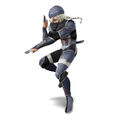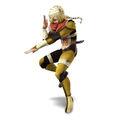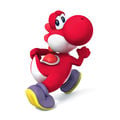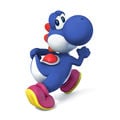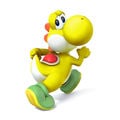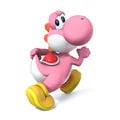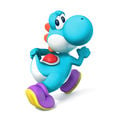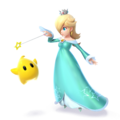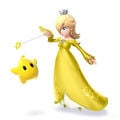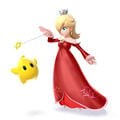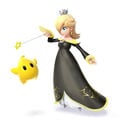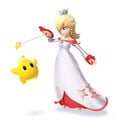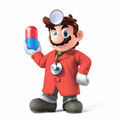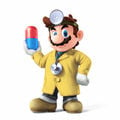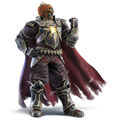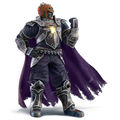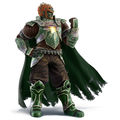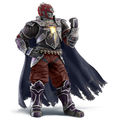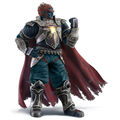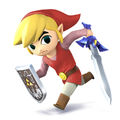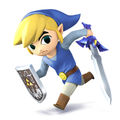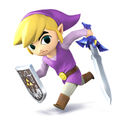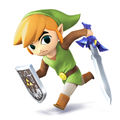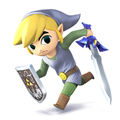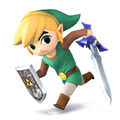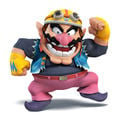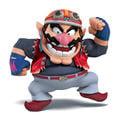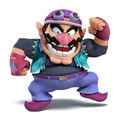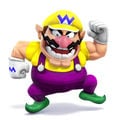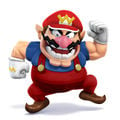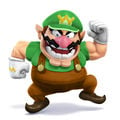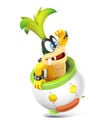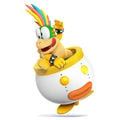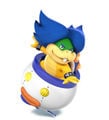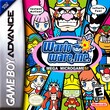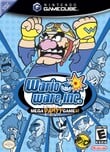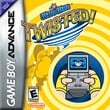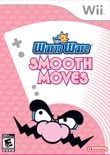User:Mario/sandbox: Difference between revisions
(→Character artwork: +Toon Link and Ganondork.) |
No edit summary |
||
| Line 1: | Line 1: | ||
{{DISPLAYTITLE:Mario's Underground Workings}} | |||
[[File:Mario Artwork (alt) - Super Smash Bros. Wii U 3DS.png|thumb|204px|I'm sexy.]] | [[File:Mario Artwork (alt) - Super Smash Bros. Wii U 3DS.png|thumb|204px|I'm sexy.]] | ||
| Line 162: | Line 163: | ||
File:Larry SSB4 Artwork.jpg|[[Larry]] | File:Larry SSB4 Artwork.jpg|[[Larry]] | ||
</gallery> | </gallery> | ||
==The freaking (series) pages== | |||
The (series) page are one of the suckiest part of our wiki. There has been [http://www.marioboards.com/index.php?topic=32903.0 one discussion] about it, talks about the formatting of the pages. There is a small agreement that the current table formatting of, say, [[Mario (series)]], [[Donkey Kong (series)|Konkey Dong (series)]], and similar pages need to be removed or ''at least'' overhauled. | |||
There has been discussion on removing entire sections on Character/thing/items. | |||
There are also some ideas to talk about the series as a whole, its overall reception, for instance. There also has been talks about continuity within each series. | |||
Anyway, here's an attempt on overhauling one (series) page, the [[WarioWare]] series. I've attempted to remove the chunky clunky table from WarioWare series page and make the formatting similar to a "less developed" series page, [[Donkey Kong Land (series)]]. | |||
== == | |||
{{articleabout|the video game series|other uses|[[WarioWare, Inc. (disambiguation)]]}} | |||
{{series-infobox | |||
|image=[[File:WarioWare logo.png|250px]] | |||
|first= ''[[WarioWare, Inc.: Mega Microgame$!]]'' ([[List of games by date#2003|2003]]) | |||
|latest=''[[Game & Wario]]'' ([[List of games by date#2013|2013]]) | |||
|number=9 | |||
|parent=''[[Wario (series)|Wario]]'' | |||
|staff=[[Goro Abe]], [[Taku Sugioka]], [[Ko Takeuchi]], [[Yoshio Sakamoto]] | |||
}} | |||
[[File:Made in Wariologfo.png|thumb|left|The Japanese logo]] | |||
'''''WarioWare''''', sometimes '''''WarioWare, Inc.''''' and known as '''''Made in Wario''''' (メイド イン ワリオ ''Meido in Wario'') in Japan, is a video game series published by [[Nintendo]] and mostly co-developed by [[Nintendo SPD|Nintendo SPD Group No. 1]] and [[Intelligent Systems]]. It is focused on very short and simple [[minigame]]s, more specifically [[microgame]]s. It was introduced in 2003 and is a spin-off of both ''[[Mario Artist#Mario Artist: Polygon Studio|Mario Artist: Polygon Studio]]'' and the [[Wario (series)|''Wario'' series]]. The concept of ''WarioWare'' was first used in the named ''[[Mario Artist]]'' title. The plot of the ''WarioWare'' series centers around its main character, [[Wario]], and his friends who work for his "company", [[WarioWare, Inc. (company)|WarioWare, Inc.]], and develop the microgames. | |||
== Overview == | |||
''WarioWare'' or spin-off games have been published for every [[Nintendo]] system after 2003 except the [[Nintendo 3DS]], and their style varies from system to system, depending on its features (e.g. for [[Nintendo DS]], the games are based on touching the touch screen and blowing into the microphone). Each game consists of microgames (really tiny and simple games like popping balloons or spinning a [[coin]]) that are often crazy (like [[Gold Digger|picking a nose]]). The games might seem simple, but as the player's level goes up, they become more and more challenging. This concept was first used in ''[[Mario Artist: Polygon Studio]]'' in the so-called Sound Bomber mode, but only with a very small number of microgames. Beneath the microgame stages, all ''WarioWare'' titles offer unlockable extra modes and "full" minigames. | |||
Story-wise, the games center on Wario, his company WarioWare, Inc., and his friends in [[Diamond City]] who develop microgames for his company, though greedy Wario usually refuses to pay his friends, despite the high success of the games. ''WarioWare'' introduced several new characters, which are featured solely in these games, except for minor appearances in ''[[Super Smash Bros. (series)|Super Smash Bros. series]]''. Most games of the series include short stories in the form of cut scenes dedicated to each of the developers, telling about adventures or the everyday life of them. These cut scenes are split into two parts, the first one can be seen before the developer's respective microgame stage, while the latter part with the ending appears after the player beat the stage. | |||
===Main series=== | |||
====''[[WarioWare, Inc.: Mega Microgame$!]]''==== | |||
[[File:Wario-ware-inc-mega-microgamesUSA.jpg|110px|left]] | |||
*'''Released''' – {{releasedate|Japan|March 21, 2003}} | |||
*'''System''' – [[Game Boy Advance]] | |||
The first installment of the series, ''WarioWare, Inc.: Mega Microgame$!'' begins with Wario's starting a video game company called [[WarioWare, Inc.]], wishing to replicate the success of ''[[Pyoro]]''. He stops working after one video game, however, so he hires his friends to make the rest of the game.''WarioWare, Inc.: Mega Microgame$'' introduces several characters including [[Jimmy T.]], [[Dribble and Spitz]], [[Mona]], [[9-Volt]], [[Orbulon]], [[Dr. Crygor]], and [[Kat and Ana]]. Each have their own story to tell, and each have a unique set of microgames styled on a theme. | |||
{{br}} | |||
====''[[WarioWare, Inc.: Mega Party Game$!]]''==== | |||
[[File:Megapartygames.jpg|110px|left]] | |||
*'''Released''' – {{releasedate|Japan|October 17, 2003}} | |||
*'''System''' – [[Nintendo Gamecube]] | |||
''WarioWare, Inc.: Mega Party Game$!'' returns the microgames while focusing on the multiplayer aspect. There are no plots or story-themed stages, although each character is still associated with a specific theme of microgames. Each character is also associated with one of the many multiplayer modes. | |||
{{br}} | |||
====''[[WarioWare: Twisted!]]''==== | |||
[[File:Wwt.jpg|110px|left|]] | |||
*'''Released''' – {{releasedate|Japan|October 14, 2004}} | |||
*'''System''' – [[Gameboy Advance]] | |||
The microgames of ''WarioWare, Twisted!'' take advantage of the [[Gameboy Advance]]'s tilt sensor and the rumble feature. ''WarioWare, Twisted!'' returns the character-specific story segments, and it is the first game that organizes the microgames around the control scheme rather than an aesthetic style. [[Wario-Man]], an alter-ego of Wario, and [[18-Volt]], a friend of 9-Volt, also make a first appearance. This game has not been released in Europe. | |||
{{br}} | |||
====''[[WarioWare: Touched!]]''==== | |||
[[File:WWDS.jpg|110px|left]] | |||
*'''Released''' – {{releasedate|Japan|December 2, 2004}} | |||
*'''System''' – [[Nintendo DS]] | |||
''WarioWare: Touched!'' uses mainly the touchscreen controls of the [[Nintendo DS]]. It also introduces a few new characters: [[Ashley and Red]], the [[Thang Family]], [[Mike]]. As in ''WarioWare: Twisted!'', each character microgame set is based on certain controls rather than an aesthetic theme (for instance, Mona's microgames involve making slicing movements on the touch screen). | |||
{{br}} | |||
====''[[WarioWare: Smooth Moves]]''==== | |||
[[File:Smooth moves cover.jpg|110px|left]] | |||
*'''Released''' – {{releasedate|Japan|December 2, 2006}} | |||
*'''System''' – [[Wii]] | |||
As with most previous ''WarioWare'' games, ''WarioWare: Smooth Moves'' relies on its system's main feature: the Nintendo Wii's motion controls. In the game, the Wii Remote is referred as the [[Form Baton]]; there are several positions the Form Baton can assume. ''WarioWare: Smooth Moves'' introduces several characters: [[Young Cricket and Master Mantis]]; [[Penny]], the granddaughter of Dr. Crygor; Jimmy P., a Jimmy T. lookalike; and [[Tiny Wario]]. | |||
{{br}} | |||
====''[[WarioWare: D.I.Y.]]''==== | |||
[[File:USWarioDIY.png|110px|left]] | |||
*'''Released''' – {{releasedate|Japan|April 29, 2009}} | |||
*'''System''' – [[Nintendo DS]] | |||
WarioWare: D.I.Y. is the first ''WarioWare'' game that allows players to create their own microgames as well as play some premade microgames with the [[Super MakerMatic 21]]. | |||
Revision as of 16:29, October 21, 2014
This is what it's going to look like once all recolors artwork is uploaded. Not like this in its current state, idiot, but it's an idea. Finally, so we can maintain consistency, the shadowless artwork and that sexy Mario without fire artwork will have its own section.
Character artwork
Default veterans
- Luigi SSBU.png
- Yoshi SSB4 Artwork - Purple.jpg
- Yoshi SSB4 Artwork - Black.jpg
Default newcomers
Unlockable veterans
- Dr Mario SSB4 Artwork.jpg
Unlockable newcomers
- Bowser Jr SSB4 Artwork.jpg
The freaking (series) pages
The (series) page are one of the suckiest part of our wiki. There has been one discussion about it, talks about the formatting of the pages. There is a small agreement that the current table formatting of, say, Mario (series), Konkey Dong (series), and similar pages need to be removed or at least overhauled.
There has been discussion on removing entire sections on Character/thing/items.
There are also some ideas to talk about the series as a whole, its overall reception, for instance. There also has been talks about continuity within each series.
Anyway, here's an attempt on overhauling one (series) page, the WarioWare series. I've attempted to remove the chunky clunky table from WarioWare series page and make the formatting similar to a "less developed" series page, Donkey Kong Land (series).
Template:Articleabout Template:Series-infobox
WarioWare, sometimes WarioWare, Inc. and known as Made in Wario (メイド イン ワリオ Meido in Wario) in Japan, is a video game series published by Nintendo and mostly co-developed by Nintendo SPD Group No. 1 and Intelligent Systems. It is focused on very short and simple minigames, more specifically microgames. It was introduced in 2003 and is a spin-off of both Mario Artist: Polygon Studio and the Wario series. The concept of WarioWare was first used in the named Mario Artist title. The plot of the WarioWare series centers around its main character, Wario, and his friends who work for his "company", WarioWare, Inc., and develop the microgames.
Overview
WarioWare or spin-off games have been published for every Nintendo system after 2003 except the Nintendo 3DS, and their style varies from system to system, depending on its features (e.g. for Nintendo DS, the games are based on touching the touch screen and blowing into the microphone). Each game consists of microgames (really tiny and simple games like popping balloons or spinning a coin) that are often crazy (like picking a nose). The games might seem simple, but as the player's level goes up, they become more and more challenging. This concept was first used in Mario Artist: Polygon Studio in the so-called Sound Bomber mode, but only with a very small number of microgames. Beneath the microgame stages, all WarioWare titles offer unlockable extra modes and "full" minigames.
Story-wise, the games center on Wario, his company WarioWare, Inc., and his friends in Diamond City who develop microgames for his company, though greedy Wario usually refuses to pay his friends, despite the high success of the games. WarioWare introduced several new characters, which are featured solely in these games, except for minor appearances in Super Smash Bros. series. Most games of the series include short stories in the form of cut scenes dedicated to each of the developers, telling about adventures or the everyday life of them. These cut scenes are split into two parts, the first one can be seen before the developer's respective microgame stage, while the latter part with the ending appears after the player beat the stage.
Main series
WarioWare, Inc.: Mega Microgame$!
- Released – Template:Releasedate
- System – Game Boy Advance
The first installment of the series, WarioWare, Inc.: Mega Microgame$! begins with Wario's starting a video game company called WarioWare, Inc., wishing to replicate the success of Pyoro. He stops working after one video game, however, so he hires his friends to make the rest of the game.WarioWare, Inc.: Mega Microgame$ introduces several characters including Jimmy T., Dribble and Spitz, Mona, 9-Volt, Orbulon, Dr. Crygor, and Kat and Ana. Each have their own story to tell, and each have a unique set of microgames styled on a theme.
WarioWare, Inc.: Mega Party Game$!
- Released – Template:Releasedate
- System – Nintendo Gamecube
WarioWare, Inc.: Mega Party Game$! returns the microgames while focusing on the multiplayer aspect. There are no plots or story-themed stages, although each character is still associated with a specific theme of microgames. Each character is also associated with one of the many multiplayer modes.
WarioWare: Twisted!
- Released – Template:Releasedate
- System – Gameboy Advance
The microgames of WarioWare, Twisted! take advantage of the Gameboy Advance's tilt sensor and the rumble feature. WarioWare, Twisted! returns the character-specific story segments, and it is the first game that organizes the microgames around the control scheme rather than an aesthetic style. Wario-Man, an alter-ego of Wario, and 18-Volt, a friend of 9-Volt, also make a first appearance. This game has not been released in Europe.
WarioWare: Touched!
- Released – Template:Releasedate
- System – Nintendo DS
WarioWare: Touched! uses mainly the touchscreen controls of the Nintendo DS. It also introduces a few new characters: Ashley and Red, the Thang Family, Mike. As in WarioWare: Twisted!, each character microgame set is based on certain controls rather than an aesthetic theme (for instance, Mona's microgames involve making slicing movements on the touch screen).
WarioWare: Smooth Moves
- Released – Template:Releasedate
- System – Wii
As with most previous WarioWare games, WarioWare: Smooth Moves relies on its system's main feature: the Nintendo Wii's motion controls. In the game, the Wii Remote is referred as the Form Baton; there are several positions the Form Baton can assume. WarioWare: Smooth Moves introduces several characters: Young Cricket and Master Mantis; Penny, the granddaughter of Dr. Crygor; Jimmy P., a Jimmy T. lookalike; and Tiny Wario.
WarioWare: D.I.Y.
- Released – Template:Releasedate
- System – Nintendo DS
WarioWare: D.I.Y. is the first WarioWare game that allows players to create their own microgames as well as play some premade microgames with the Super MakerMatic 21.
